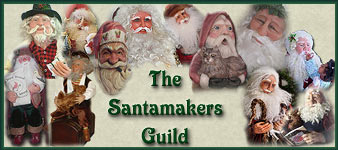Those of you with sharp eyes will notice that this elf is being carved in Spanish cedar. "What?" you say. "Spanish cedar! Are you nuts? Don't you know that Spanish cedar DOES NOT HOLD DETAILS WELL?"
Well, yeah. I know that. But it was what was close to hand, and, since this was pretty much an experiment with new work methods, I figured that if I FUBAR'ed it I could blame the wood. And if I screwed it up just a little I could use the grain to hide the "design adjustment". So sue me!
Oh, by the way, this is my first elf. Talk about a glutton for punishment!
As it turned out, it wasn't all that bad. Sharp knives and tiny, tiny chips will allow you to carve in almost anything if you have the patience. Besides, I'm the kind of guy who is apt to say, "What the hell, let's try it and see what happens!" (See Kari Hultman's blog post on that kind of attitude and it's gender implications.)
I also changed the way I do eyes. I normally use a straight "v" cut to establish the eye channels and refine from there. Here I have used a method similar to what Tom Hines uses. I made a stop cut alongside the bridge of the nose with the blade at a slight angle away from the center of the face (to establish the side slope of the nose), moved the blade up until it was almost vertical as I reached the beginning of the eyebrow, and then slanted the knife blade towards the bottom of the face to establish the slope of the upper part of the eye socket. I then started the second cut with the blade at a pretty acute angle up toward the top of the face at the beginning of the previous stop cut. I continued the cut up and around the top of the cheek trying to meet the previous stop cut. When the chip pops out you have established the upper slope of the eye socket and the upper slope of the cheek. Then (particularly if you are working with cedar) you take tiny, tiny chips out of the upper slope of the cheek, increasing that and defining the lower curve of the eye mound. You can see that in the four photos above. I hope. (Click on a photo to get a full size version.)
The point of all this change is that by rounding the face before hand and doing the eyes this way, I seem to be able to be more consistent in forming the eye mounds leaving me more leeway in how I choose to finish the eyes, whether open, winking, or happy squint as I have here.
(BTW, that wispy thing clinging to the elf's hat is NOT a cat hair. No. Absolutely not. It is, in fact, an artifact on the film . . . uh . . . digital imager. Yeah. That's it! An artifact. That's my story and I'm sticking to it.)
Which brings me back to Spanish cedar. You can carve it. I made several boo-boos that cost me a chunk of the nose and another chunk of the beard (such as it is). I was able to save the piece with two strategies: Start off making things a little bigger than they need to be; cut tiny, tiny chips with a very sharp knife while you are doing details. Because, EVERYONE knows that cedar DOES NOT HOLD DETAILS WELL!. Well, almost everyone.
Speaking of eyes, I do several different types. Probably not good for my "brand", but it keeps me interested. The eyes on the Santa are a type most often seen on Scandinavian Flat Plane figures. Four cuts and pop out a chip. Careful not to pop out the wrong one!
Well, I think I've rambled enough for one day. Until next time, when we get back to the lovespoon (I hope), let the chips fly!









































